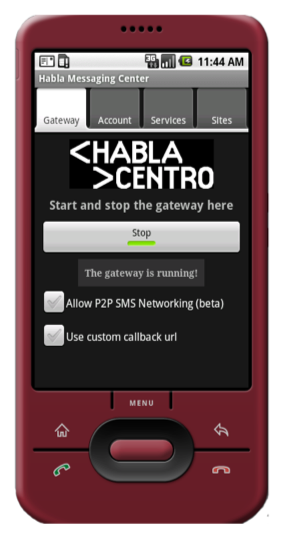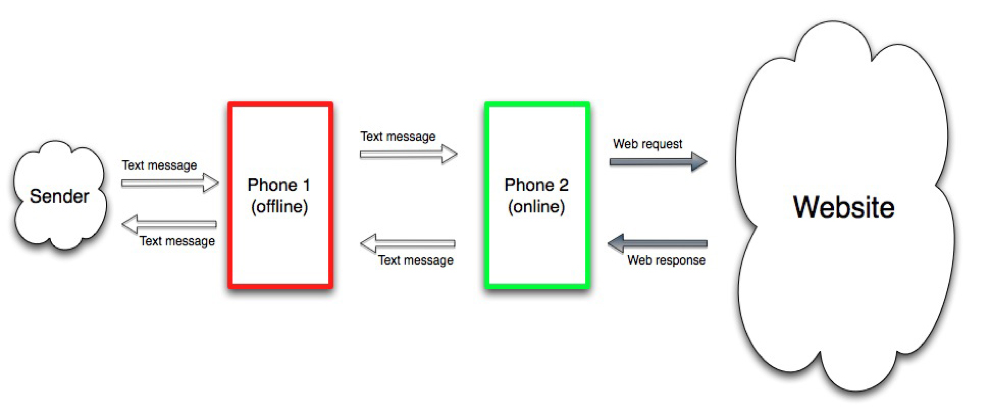I recently got this question. Innovation to me is not (at least only) about creating advanced, cutting-edge technology. It is all about creating a simple, approachable and accessible end-user experience. This may require complex, cutting-edge technology, but the fundamental driver should and must always be achieve the optimal and simplest end-user experience. With this in mind, I believe the most innovative thing I have created is InTheFieldOnline since it allows people previously excluded from the information society to participate in all aspects. Even though I have created many very technically advanced systems or solutions, I still believe this to be the most innovative of the reasons previously mentioned.
Let us first start with some context and background. I was a fellow in social entrepreneurship at Stanford back in 2005-2006 where my focus was on how to improve the news coverage in Iraq. Journalists faced and continue to face enormous dangers covering wars, conflicts, national disasters or any other similar events.
If you see a car bomb blast, your first thought is not to go to an Internet cafe and start blogging. Most likely, you will turn to the device you have on you – your cell phone – to let family and friends know you are safe. Almost everywhere in the world, cell phones are available, with the ability to send text, photos, even video. What if the same cellphone could also be used to share with the world what happened as it happens?
It is important to consider the general characteristics of the mobile arena was at the time even though many of those are still valid today. Cellphones were predominantly only used to call each other, and text messaging was in the very early stages of growth. Very few companies, if any, considered even having a mobile strategy and the device market was highly fragmented as far as operating systems making any application hard to impossible to maintain in an efficient manner. For instance, Steve Bratt, W3C CEO, said during his speech at the Mobile 2.0 event in San Francisco, November 6th, 2006: “The mobile web today is in the same state as the World Wide Web was in 1994 – too slow, still a walled garden, lack of interoperability, need of child protection and not always accessible.” A lot has changed yet surprisingly not all has.
I started to think through options for how to do it and look around for various different solutions which would allow a user to post via their phone online. I did find a number of solutions for SMS gateways which had the ability to process an SMS and then send a web request to a server. I started to think that if we combined these SMS gateways with a server-side solution which could interact with content management systems, I would then be able to allow people to contribute via text messages (i.e. SMS, MMS etc) from anywhere, anytime by any phone. This was the core of what became InTheFieldOnline which later evolved into a complete cellphone-powered content management system, allowing any organization to setup a complete regional cellphone-powered information system with no technical skills.
The first version of InTheFieldOnline allowed me to create a community-based text-message powered blog covering the conflict in Lebanon in July 2006 which was the first of its kind. Within a week, the blog received first-hand accounts from individuals on the streets of Haifa and Beirut. It was widely recognized by major global media including PBS, CNN and BBC. It was also featured on Discovery International’s Rewind 2006 as one of 25 highlights of the Year 2006.
Let us expand a bit on the current state to illustrate these situations remains a challenge even today in many locations. Collecting, sharing and distributing content to and from remote and/or rural areas is incredibly vital in multiple aspects. For instance, reaching communities efficiently in order for them to contribute or share important civic information is a challenge as the available or the very least reliable data connectivity is still often scarce in a large portion of the world. As the data connectivity becomes more limited, the need for information often grows rapidly.
One of my visits to Guatemala taught me a great deal about the challenges faced in a developing country (or even remote areas in the developed world for that matter). Poverty is rampant and contributes to disease and shortened lifespans. For instance, acute respiratory infections are a major source for the deaths of children under one year. Most of deaths as a result of diseases are preventable by just making essential information available in remote areas.
The information people need most here is not the common national news broadcast at the end of the day, but necessary information like traffic alerts, weather and road conditions (landslides, traffic jams, volcano eruptions, accidents), health alerts for disease outbreaks, crime reports, and other information they can access in the palm of their hands and in a daily minute-by-minute way.
This information is then most effectively collected in and shared to a centrally managed information hub, yet at the same time also needs to be accessible even from remote areas where data connectivity is scarce if at all available.
Social context is one of the most important elements of any solution. In remote areas in countries such as Guatemala there is a pronounced element of mistrust of information coming from centrally managed sources. The mechanism to collect and share this information must then be local in nature or the very least have an interface that provides or vouch for the trustworthiness of the information shared. To accomplish this, it is necessary to allow key members of the communities to be able to collect this information yet those often have very limited technical skills or literacy.
To summarize, the overall key characteristics needs to be centrally managed, accessible even with limited data connectivity in both directions, and distributed by a vastly distribution of location by often people with often very low technical skills or literacy.

I had previously leveraged GPRS modems connected to a Linux computer to process and send text messages. Considering these characteristics, such a solution would not work at all and all our attempts to do so also failed. This led me to develop an Android based application which interacts with a backing cloud-based service written in Ruby on Rails. I developed an application called Habla Centro Messaging Center, which is easily installed in 2-3 clicks and is controlled with a single button. The application allows anyone to operate a local version of a SMS gateway without any technical knowledge. Additionally, key members of the communities can then utilize these local SMS gateways which then creates an inherent trust of their communities which helped with the adoption of the solution and more importantly the usage thereof.
As previously mentioned, the application must also work whether a data connectivity exists or not which is particularly important when you look at the developing world and crisis situations as previously mentioned.
The application addressed this in two ways. First, if there is no data connectivity, the message is saved encrypted in a local database on the handset and posted later using a background service on the device itself when the data connectivity become available again.
However, for many of the key use cases previously mentioned the information is often time sensitive. It was therefore necessary to introduce a way for this application to be able to communicate in both directions with the online entity even when its data connectivity was poor or completely unavailable.
I designed a concept which I call P2P SMS Networking, which is a novel way to collect, share and distribute text messages using a network of these applications or any other type of SMS gateway even when some of the nodes are offline. Each Messaging Center allows the user of it to opt-in to become a P2P SMS Network Node. Such a P2P node can relay text messages to other P2P Nodes which can then subsequently and/or eventually interact with the central information hub.
The basic concept behind P2P SMS Networking is simple: Consider an Android phone which does not have or have a poor data connection. When it retrieves the text message, the text message will be forwarded to a second P2P Node (cellphone or gateway), which has an available data connection. This second P2P Node then posts the message online and reply back via a text message the response to the original P2P Node. This node then replies via SMS to the initial sender of the text message. This works for both pushing and retrieving information and also allows for multiple handoffs in the P2P Node Network. All communication between the nodes are only done over SMS allowing this to work even in the case of natural disasters where data connectivity is more or less always not available.

This allows for the user to be able to interact with the centrally managed information hub. However, each node needs to know which node(s) it can communicate with from multiple reasons. Ideally each node should have a list of one or several helper node(s) to fall back to when it loses connectivity or cannot for any other reason interact with the central information hub. I introduced the concept of location based checkins via the application. Every 10-15 minutes the application would make a request to the cloud-based service with its location (GPS coordinates, cell network information, number). The service would then respond with a list of one or several P2P helper nodes. If such a checkin would fail or timeout, the application falls back to P2P SMS Networking if the user opted in until a checkin is successful again. This effectively shields the owner of the local gateway from any troubleshooting of issues and more importantly any training.
As evidenced, the essence of the solution is not about utilizing advanced and complex technology, but rather about choosing the right architectural elements to build up a simple straightforward user experience enabling a previously excluded group of people. It has been used across the entire world and been utilized for anything from election coverage by youth in Central America to coordination of health workers in disaster relief areas. The original implementation laid the groundworks for mobile based reporting and it’s subsequent implementations have unlocked a wide area of applications by the organizations using it.